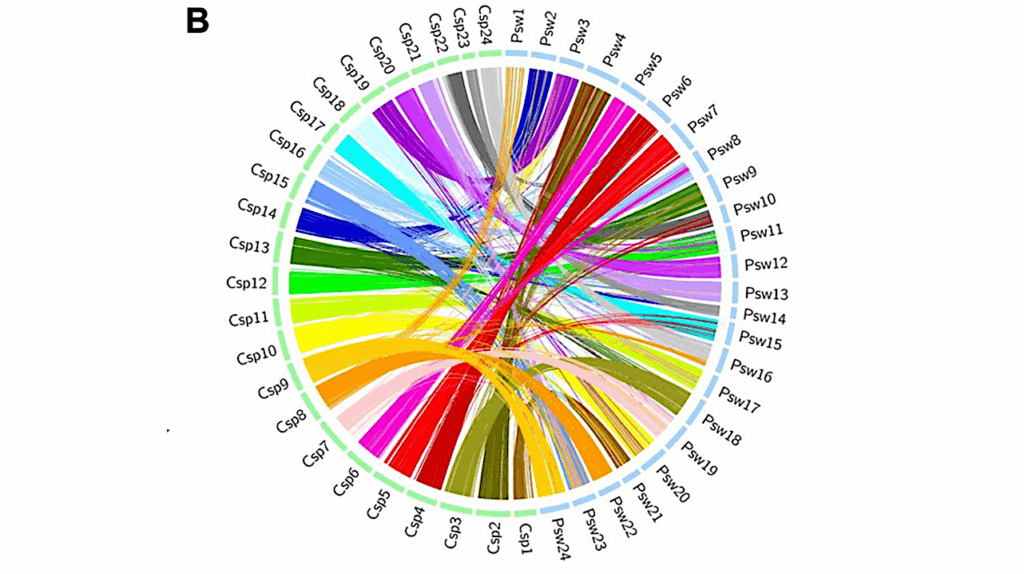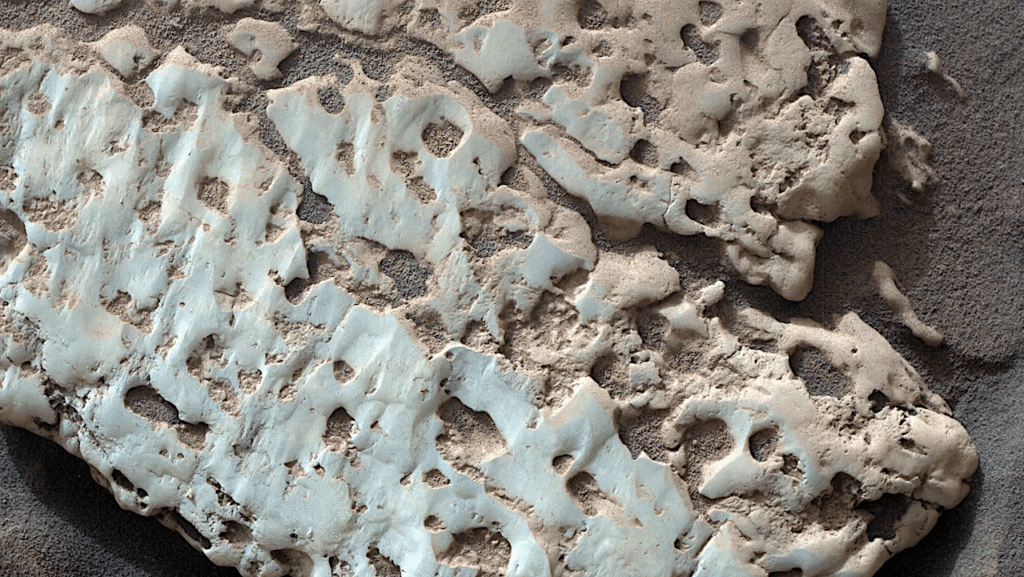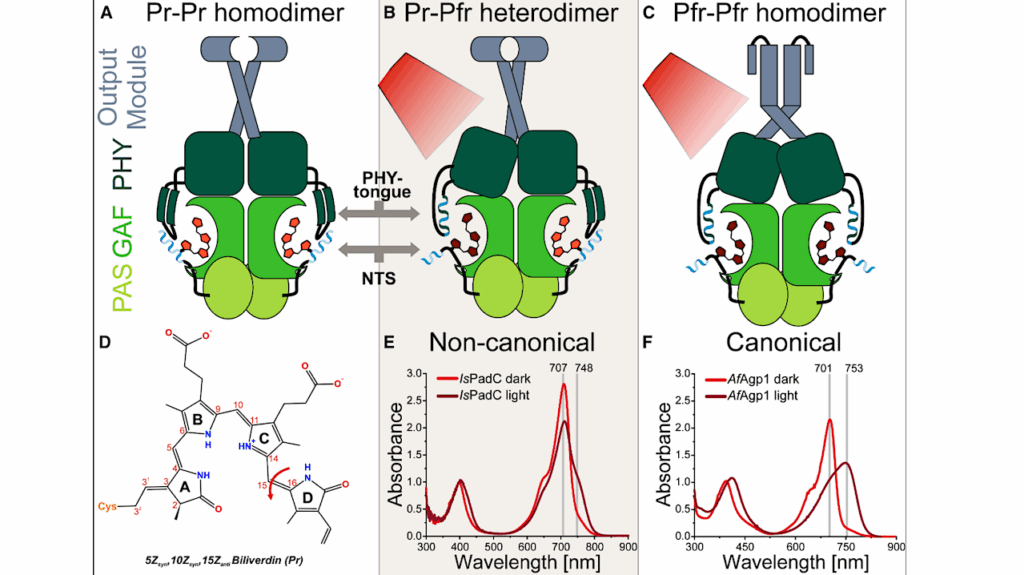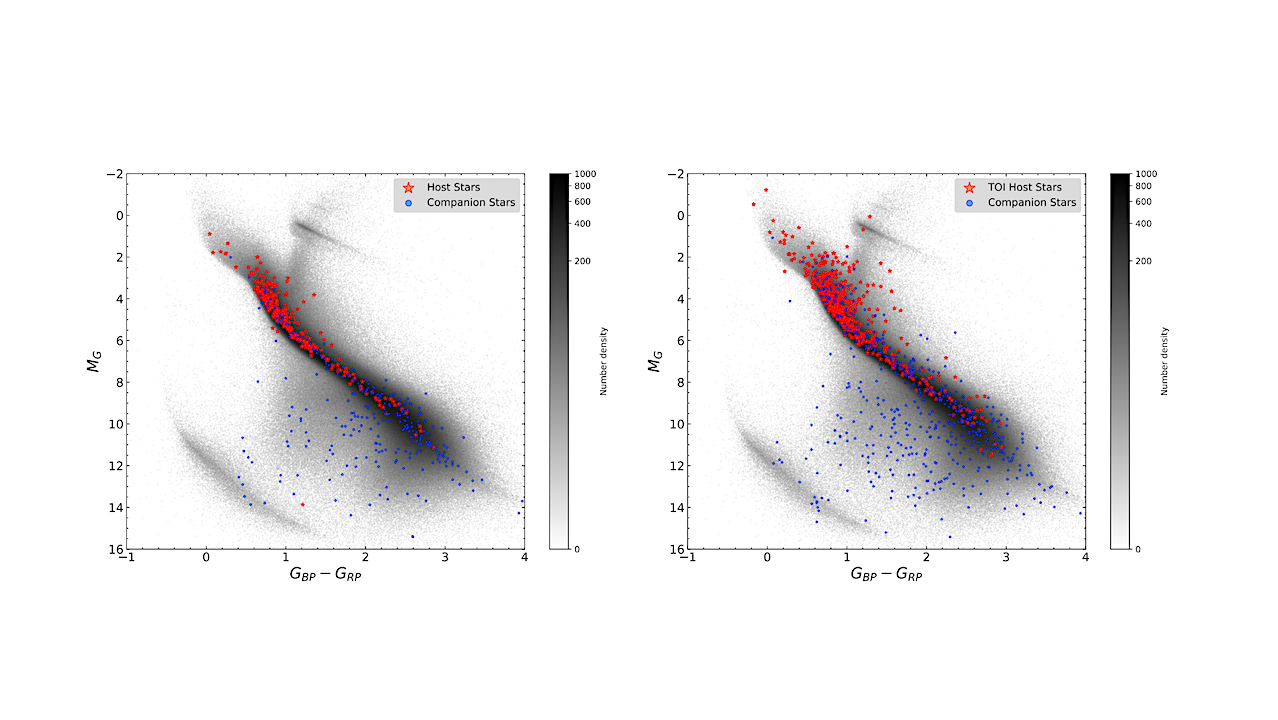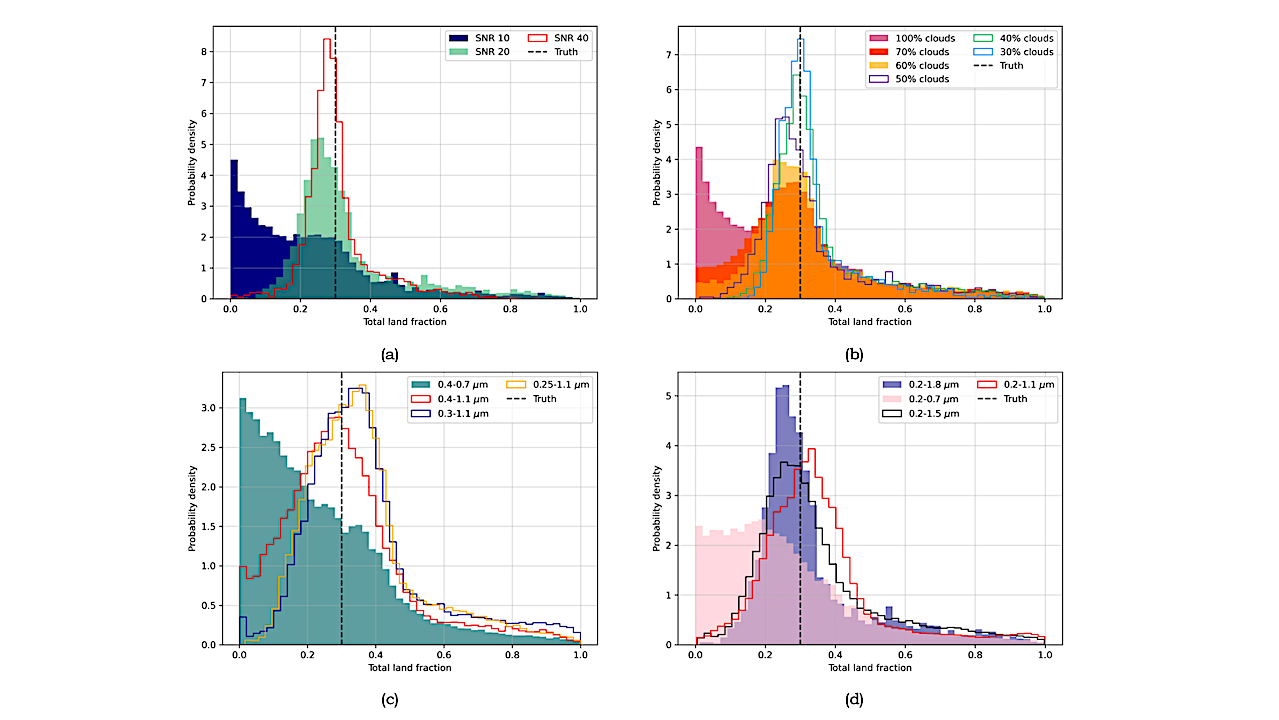Now Reading: Origin Of The RNA World In Cold Hadean Geothermal Fields Enriched In Zinc And Potassium – Abiogenesis As A Positive Fallout From The Moon-Forming Impact?
-
01
Origin Of The RNA World In Cold Hadean Geothermal Fields Enriched In Zinc And Potassium – Abiogenesis As A Positive Fallout From The Moon-Forming Impact?
Origin Of The RNA World In Cold Hadean Geothermal Fields Enriched In Zinc And Potassium – Abiogenesis As A Positive Fallout From The Moon-Forming Impact?
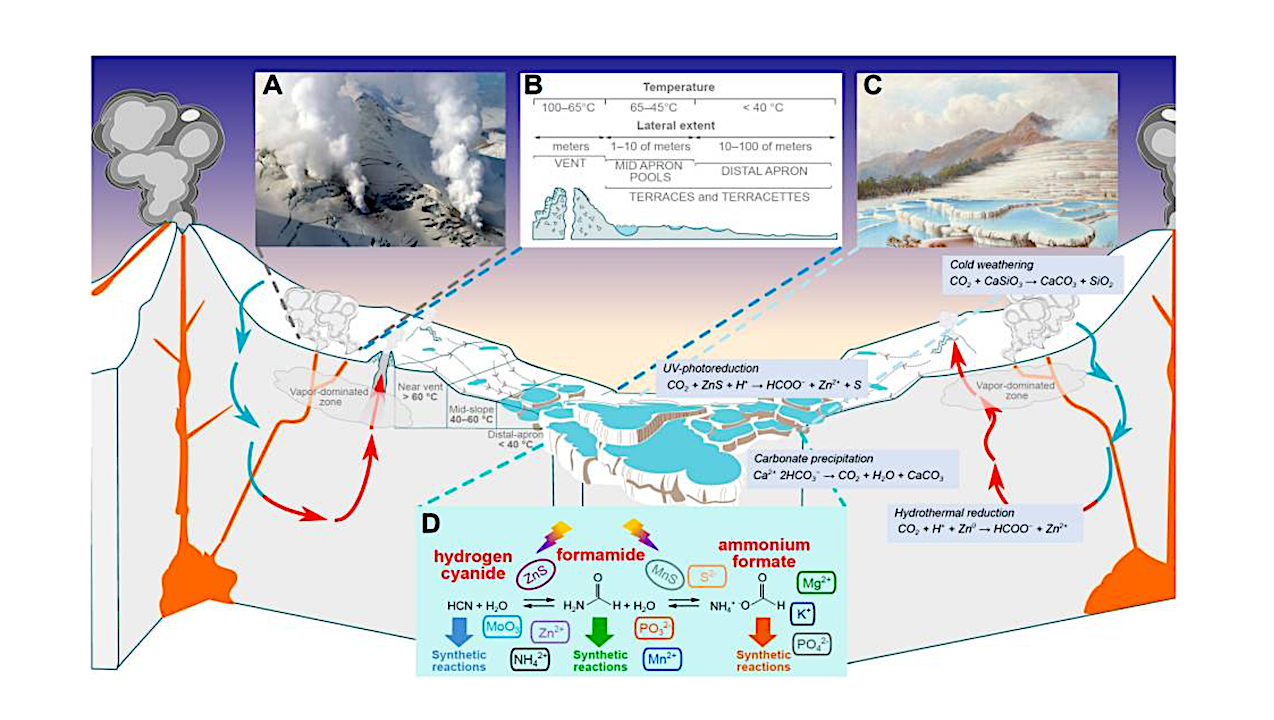

Scheme of a geothermal valley between two snow-covered Hadean volcanoes. The fumaroles, thermal springs, apron pools, and terracettes are shown based on the reconstruction of the 3.48 Ga old Hadean geothermal system. On the right, various reactions of CO2 sequestration in a Hadean volcanic system are indicated, see Section 3.2.5 and Section 3.2.6. Inserts: (A) volcanic fumaroles, image from https://home.nps.gov/articles/000/fumaroles.htm, credit: USGS. (B) Schematic cross section of a pH-neutral hot spring, redrawn with modifications from [341,342]. (C) White Terraces of New Zealand as an example of volcanic terracettes (painted by Charles Bloomfield in 1884, two years before the terraces were buried under the waters of the lake Rotomahana following the eruption of Mt. Tarawera. Image credit: Museum of New Zeeland, https://collections.tepapa.govt.nz/object/42254, accessed on 23 December 2024.). (D) Interconversion of nitriles, amides, and ammonium salts of organic acids, represented by their simplest species, in geothermal pools in the presence of inorganic catalysts; each of the nitrogen-containing compounds shown is considered as a substrate for further synthetic reactions. Formamide and other amides, as the least volatile components, may have sustained/buffered the whole system. — Life via PubMed
The ubiquitous, evolutionarily oldest RNAs and proteins exclusively use rather rare zinc as transition metal cofactor and potassium as alkali metal cofactor, which implies their abundance in the habitats of the first organisms.
Intriguingly, lunar rocks contain a hundred times less zinc and ten times less potassium than the Earth’s crust; the Moon is also depleted in other moderately volatile elements (MVEs). Current theories of impact formation of the Moon attribute this depletion to the MVEs still being in a gaseous state when the hot post-impact disk contracted and separated from the nascent Moon.
The MVEs then fell out onto juvenile Earth’s protocrust; zinc, as the most volatile metal, precipitated last, just after potassium. According to our calculations, the top layer of the protocrust must have contained up to 1019 kg of metallic zinc, a powerful reductant.
The venting of hot geothermal fluids through this MVE-fallout layer, rich in metallic zinc and radioactive potassium, both capable of reducing carbon dioxide and dinitrogen, must have yielded a plethora of organic molecules released with the geothermal vapor.
n the pools of vapor condensate, the RNA-like molecules may have emerged through a pre-Darwinian selection for low-volatile, associative, mineral-affine, radiation-resistant, nitrogen-rich, and polymerizable molecules.
Origin of the RNA World in Cold Hadean Geothermal Fields Enriched in Zinc and Potassium: Abiogenesis as a Positive Fallout from the Moon-Forming Impact?, Life via PubMed (open access)
Astrobiology, Astrochemistry,
Stay Informed With the Latest & Most Important News
-
 01From Polymerization-Enabled Folding and Assembly to Chemical Evolution: Key Processes for Emergence of Functional Polymers in the Origin of Life
01From Polymerization-Enabled Folding and Assembly to Chemical Evolution: Key Processes for Emergence of Functional Polymers in the Origin of Life -
 02Panasonic Leica Summilux DG 15mm f/1.7 ASPH review
02Panasonic Leica Summilux DG 15mm f/1.7 ASPH review -
 03Two Black Holes Observed Circling Each Other for the First Time
03Two Black Holes Observed Circling Each Other for the First Time -
 04How New NASA, India Earth Satellite NISAR Will See Earth
04How New NASA, India Earth Satellite NISAR Will See Earth -
 05And Thus Begins A New Year For Life On Earth
05And Thus Begins A New Year For Life On Earth -
 06Astronomy Activation Ambassadors: A New Era
06Astronomy Activation Ambassadors: A New Era -
07SpaceX launch surge helps set new global launch record in 2024













